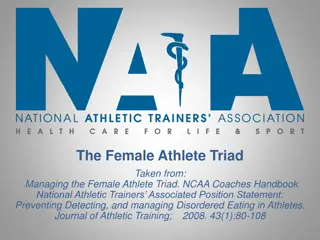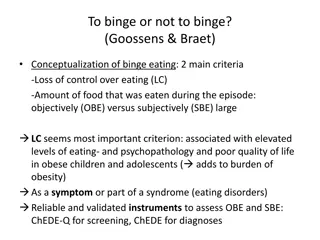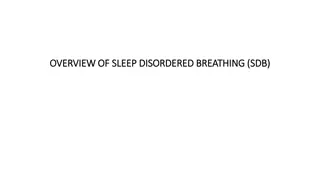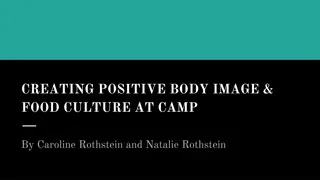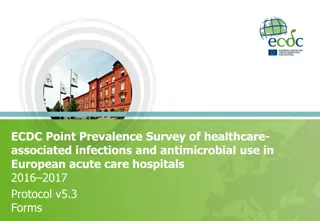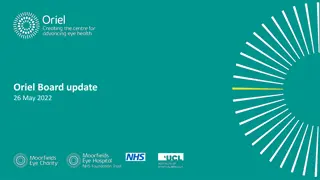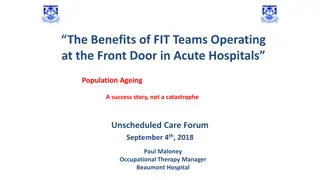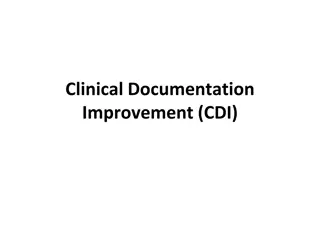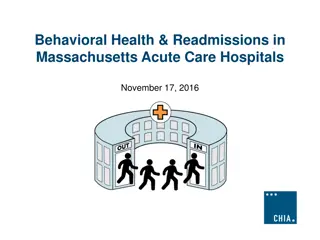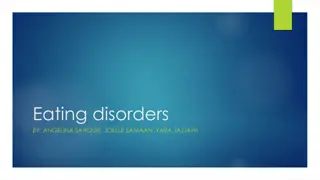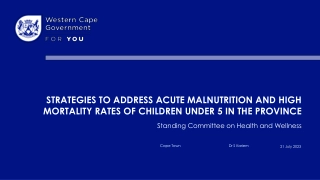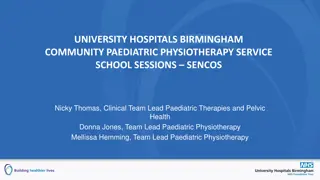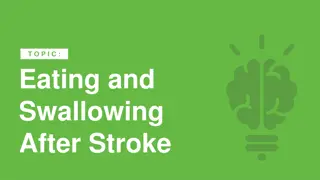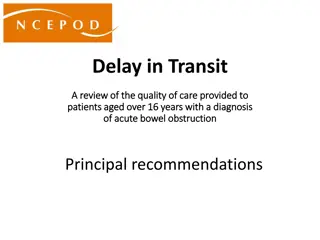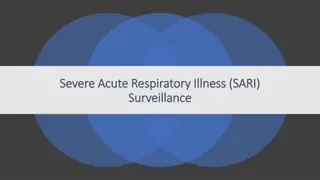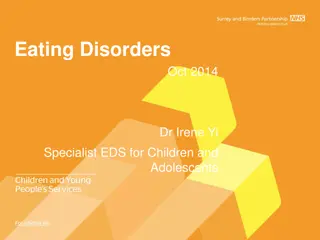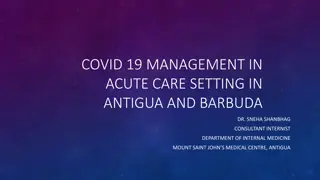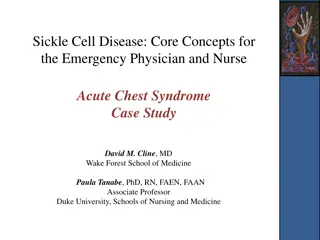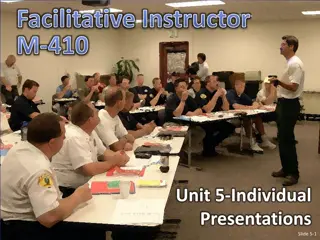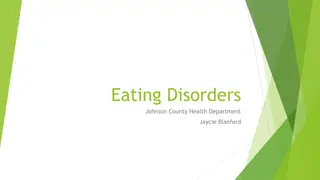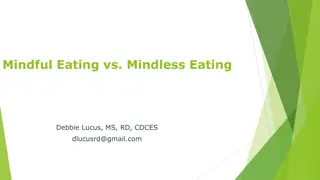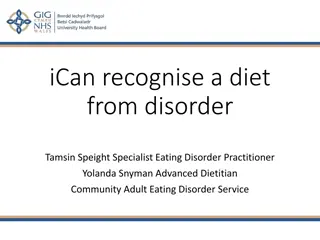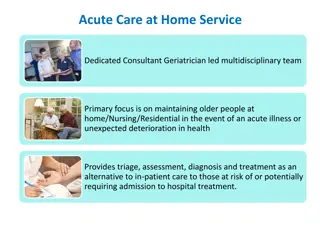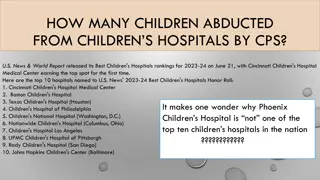Challenges and Trends in Managing Disordered Eating Presentations in Acute Hospitals During Covid-19
A greater burden of unmet mental health needs has emerged during lockdowns, with a notable increase in disordered eating cases since 2021. There has been a rise in presentations to acute hospitals, revealing gaps in services and posing challenges to joint working. The trend in paediatric admissions shows a significant increase, emphasizing the need for effective management strategies in addressing the complexity and severity of mental health concerns.
Download Presentation

Please find below an Image/Link to download the presentation.
The content on the website is provided AS IS for your information and personal use only. It may not be sold, licensed, or shared on other websites without obtaining consent from the author. Download presentation by click this link. If you encounter any issues during the download, it is possible that the publisher has removed the file from their server.
E N D
Presentation Transcript
Working with disordered eating presentations to the acute hospital during Covid-19 13.7.21 Dr Joel Khor, Consultant C&A Psychiatrist Dr Luci Etheridge, Consultant Paediatrician SWL St George s CYP eating disorders service & St George s Hospital CWDT
Greater burden of unmet mental health need accrued during lockdowns / changes going into and out of lockdown Increased focus on eating and weight in the whole population Further demands on CYP-CEDS and general CAMHS services, overwhelming already limited capacity Increase in the disordered eating group since start of 2021 Disordered eating presenting more to borough Tier 3 CAMHS and CYP-CEDS, but greatest challenges are with presentations to acute hospitals The nature of the presentations has highlighted gaps in services and service organisation, and posed challenges to joint working This is currently one of the major organizational needs for all paediatric and CYP MH services Status quo = perverse incentives and iatrogenic harm Covid-19 context
SWLSTG CYP Community ED Monthly referral rates 50 45 40 35 30 25 49 48 21 46 20 41 20 40 40 38 16 17 16 33 14 33 33 15 15 32 15 13 13 13 28 12 27 11 12 12 12 26 26 11 25 25 25 10 24 11 24 24 23 23 10 10 22 22 22 21 21 9 9 9 10 20 20 20 19 18 17 17 7 7 7 7 15 15 15 5 15 6 6 6 6 14 14 5 13 12 5 13 13 5 5 12 12 3 12 11 4 4 4 4 5 10 10 9 9 9 8 3 3 3 3 8 6 7 2 2 2 2 2 2 6 5 1 1 1 1 1 0 0 0 0 Total Referrals Accepted Referrals Urgent referrals Routine referrals
CYP-CEDS Trend in %EBW at referral => Trend increase in relative proportion of cases at or above expected body weight
Trend in paediatric admissions 60 50 In 2020-2021 66% increase in paeds admissions to SGH 46% (vs 22% in 19-20), self-present to A&E, many prior to diagnosis 54% (vs 10%) fed by NGT, mainly due to complete food and fluid refusal +/- low blood sugar LoS doubled (range 1-140 days) Overall inc in complexity and severity of mental health need at admission to paediatric ward, no real change in severity or complexity of physical health 40 30 20 10 0 2016-17 2017-18 2018-19 2019-20 2020-21 No adm MHA
CYP with other mental health and psychosocial needs presenting with food and fluid avoidance, phobias and refusal Disordered eating : What is it? Not primary DSM-5 Anorexia Nervosa, Bulimia Nervosa, or OSFED (the focus of CYP-CEDS) SWLSTG/SGH using constrained eaters as the interim term - coined by SWLSTG COO Three categories1 might be helpful to consider: food- avoidance, food phobias, and food refusal 1Nicholls, D., Barrett, E. and Huline-Dickens, S. (2014). Atypical early-onset eating disorders. Advances in Psychiatric Treatment, volume 20, pp. 330 339.
Anorexia Nervosa Diagnostic Criteria (DSM-5) A. Restriction of energy intake relative to requirements, leading to a significantly low body weightin the context of age, sex, developmental trajectory, and physical health. Significantly low weight is defined as a weight that is less than minimally normal or, for children and adolescents, less than that minimally expected. Disordered eating : What is it? B. Intense fear of gaining weight or of becoming fat, or persistent behavior that interferes with weight gain, even though at a significantly low weight. C. Disturbance in the way in which one s body weight or shape is experienced, undue influence of body weight or shape on self- evaluation, or persistent lack of recognition of the seriousness of the current low body weight. OSFED-Atypical Anorexia Nervosa Diagnostic Criteria (DSM-5) All of the criteria for anorexia nervosa are met, except that despite significant weight loss, the individual s weight is within or above the normal range
Assessment of eating and eating behaviours has to be objective what is the evidence? Assessment and treatment planning has to be holistic - Don t just focus on eating - Holistic assessment of mental health including other disorders - Personal / developmental history - Family history and social context Disordered eating : How to assess? Is there a better explanation than an eating disorder? - Medical conditions - Axis 1 disorders, developmental disorders, emotion dysregulation / emerging EUPD - A form of communication (e.g. protest, anger, frustration, pain) In these children, food refusal may be one of only a few ways that they are able to communicate that something is either physically or emotionally wrong (ibid.) At every level, don t jump to a diagnosis of Anorexia Nervosa in complex cases with diagnostic uncertainty
Do not do well on SEDUs: long-stays Different profile of needs from CYP with AN Influence to escalate eating behaviours to prove they belong Difficulties with returning to home/school Disruptive for SEDUs - may escalate to LSU / HDU Most units that can choose will not accept referrals Efficacy of out of area placements (?) Hard to avoid admission to Tier 4 once on paed ward with NG tube in situ without an exit strategy Recent CYP after 4m on paed ward negotiated brief admission to acute unit with clear plan to increase eating + parallel multiagency planning for post-discharge support, including borough T3, AOT, social care and education (+ ASD assessment) Disordered eating : inpatient psychiatric admission
Case study: 15 years old girl Low mood and self-harm from age 13 referred T3 CAMHS Started SSRI Tried to access ASD assessment Sent to A&E Inc restriction of eating and weight loss Referred CEDS Longstanding sensory issues with food and limited diet, eats alone, feels guilty, hates thighs Acute food and fluid refusal plus inc suicidal ideation. High unmet needs in the family Admitted to paeds ward Worsening restriction on ward NGT passed parental consent Assessment at CEDS Refusal of NG feeds MHA assessment
Managing disordered eating : where to 1. How to avoid acute paediatric admission? - What frameworks to set up? - Do you have a lead paediatrician for these presentations? - How you do mobilise mental health and social services response urgently and robustly? 2. How to avoid NG tube insertion? focus 3. How to achieve joint working between paediatrics and CAMHS to effectively support community treatment? 4. How do you improve assessment and treatment planning within existing resources?
Disordered eating : Admission Avoidance Admission Avoidance Paediatric admission decision guide Shared paediatric / mental health pathway Outpatient ambulatory paediatric model Mobilising appropriate community mental health involvement
SWLSTG/SGH pathway


